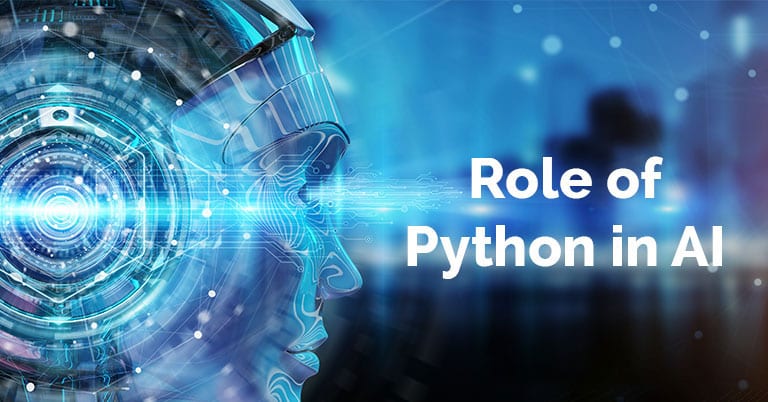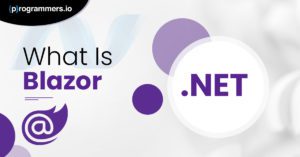Role of Python In AI
Artificial intelligence (AI) is one of the most trending technologies in the last few years. As the discussion circling around the safety of AI gains traction, developers continue to augment the capacity and abilities of AI-based technologies. AI is used for computing and analyzing large volumes of data, where it can manage the work that cannot be performed manually. For example, AI is used in analytics to build predictions that can create powerful strategies and produce viable solutions.
Why Is Python Used In AI?
AI projects are not the same as conventional software projects. The differences lie in the necessity of in-depth research, skills needed for AI-powered projects, and the type of technology stack. To implement AI applications, you should use a programming language that is flexible, stable and has all the available tools. Python development meets all of these criteria, and that is why it is predominantly used in AI.
From development to maintenance and deployment, Python empowers developers to be confident and productive while creating a solution. The primary advantages of Python in AI include consistency and simplicity, access to an excellent set of frameworks and libraries, a strong community, platform independence, and flexibility.

Python offers the least amount of code – nearly 1/5 less than other OOP languages. Here is why it is popular:
- Python has prebuilt libraries, such as Pybrain for machine learning, Scipy for advanced computing, and Numpy for scientific computing.
- Python is more flexible than other languages – you can pick between OOP and scripting approach. Besides, you can use the IDE to analyze most codes and it is a terrific tool for developers.
- Python is platform independent and is, therefore, one of the most popular and flexible options for use across various technologies and platforms.
- Python developers provide in-depth assistance and support via tutorials and forums, making coding easy.
Python provides packages like matplotlib, iPython Notebook, scikit-learn, and NumPy that are geared towards AI capabilities.
Matplotlib is a 2D plotting library used to create publication quality figures. It can be integrated with several Python scripts, web application servers, and graphical user interface toolkits.
Panda is an open-source library that offers user-friendly analytic tools and data structures for Python. Other things to do with Python include exploring k-means clustering and collecting knowledge of logistic regression, continuous numeric prediction, and decision trees.
Comparison in web application development Node vs Python
Use Cases of Python In Artificial Intelligence
Python provides a wide array of features that are useful for AI implementation across different industries. Here is a brief overview:
Travel
Skyscanner, a travel industry company, leveraged a Python-based unsupervised algorithm to make predictions on how new airplane routes would work. For this purpose, they went through hundreds of origins and destinations, analyzing them with 30 criteria to identify the passenger demand. These outcomes were generated on a dashboard, where you can pick any origin city to view the categories of destinations ordered from 0 to 9, along with their characteristics.
AI use cases in the traveling industry are useful for facilitating the development of marketing budgets, recommending destinations to the users, and setting prices for new routes.

Fintech
In the financial industry, AI addresses problems associated with automation, personalized banking, fraud prevention, and risk management. This way, it takes the quality of financial services to the next level. It is estimated that AI in fintech promises to minimize operating expenses by more than 20% by 2020.
Some well-known instances of online banking software developed via Python include Robinhood, Affirm, and Venmo. These services allow users to create and manage purchases and payments as well as form a social network with the software, empowering people to stay connected. Python is also used to develop solutions like Anaconda to analyze the market, visualize data, and make predictions.
Transportation
Uber used Python to develop a machine learning-based platform, Michaelangelo PyML. It is used for offline and online prediction to improve the efficiency of day-to-day tasks.
Healthcare
AI is revamping the healthcare space by supporting the scanning, detecting, and prediction of injuries. It helps people to maintain good health through mobile-friendly apps.
There are many useful AI projects in healthcare. For instance, Fathom is a natural language processing system used to analyze electronic health records and work on the automation of medical coding. Universities like Harvard and Standard and companies such as Facebook, Amazon, and Google are already working in this space.
AirCure is a startup that is ensuring that patients can get the correct medications on time. To help them, it uses Python for action recognition, pill recognition, and face recognition. The application is used to compute the patient’s state and evaluate whether the treatment is working. It uses IMA, a type of interactive health assistant that can clinically collect a large amount of data, which is then analyzed to improve patient’s health.
Final Thoughts
AI is a rapidly growing technology that has transformed the way scientists create solutions for real-life issues.
The versatility of libraries in Python streamlines the development processes and reduces the time required to build applications. It offers convenient readability and basic syntax for quick testing of sophisticated calculations, as well as makes the language accessible to non-developers.
Although you can use other programming languages for AI ventures, there is no escaping from the fact that Python is at the forefront of AI. That is why you should pick it for your AI applications.

How can we help you?
We have hundreds of highly-qualified, experienced experts working in 70+ technologies.









